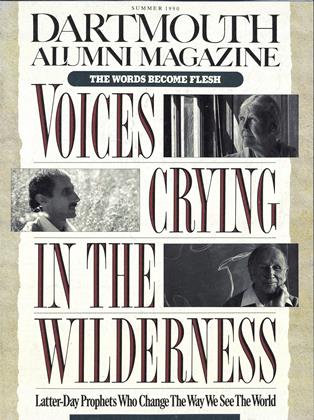• The Hunger Project, Ending Hunger: An Idea Whose Time Has Come (Praeger, 1985). The best introduction to the phenomenon of mass hunger. It gives a balanced presentation of competing definitions of and approaches to the problem.
• William W. Murdoch, The Povertyof Nations: The Political Economy ofHunger and Population (Johns Hopkins University Press, 1980). The definitive rebuttal of Mai thus's notion that the poor beget the poor because they outbreed the food supply.
• Richard W. Franke and Barbara Chasin, Seeds of Famine: Ecological Destruction and the Development Dilemmain the West African Sahel (Rowman and Allanheld, 1980). A case study that exemplifies in detail all the points made in my brief essay.
• Frances Lappe-Moore, Food First:Beyond the Myth of Scarcity (Ballantine Books, 1979). A well researched expose of how our perception of the hunger problem depends on our own self-interest.
• Andrew Pearse, Seeds of Plenty, Seedsof Want: Social and Economic Implications of the Green Revolution (Clarendon Press, 1980). A thorough critique of the production-oriented strategies of the so-called green revolution and its failure to provide for small farm development. • Robert Chambers, Rural Development: Rutting the Last First (Longman, 1983). An author with much practical experience in both India and East Africa offers one of the best discussions of the rationale and strategies for small-farm development.
• Sterling Wortman, To Feed thisWorld (Johns Hopkins University Press, 1978). This classic text argues for the rapid, capital-intensive change of agriculture from subsistence farming to the production of cash crops. Most Third World countries have pursued policies Wortman recommends. The result is that poor countries' rural areas are dominated by large-scale plantations producing export crops and employing landless labor that cannot earn or grow its own subsistence or eat any of what is destined for export.
• The World Bank, Poverty andHunger: Issues and Countries (World Bank, 1986). This report argues that increases in trade between rich and poor countries will raise the incomes of the poverty-stricken by providing opportunities for regular, well-paid employment. Underneath this plan lies the World Bank's premier interest of assuring that poor countries repay their enormous debts to rich countries' commercial banks. Yet businesses maximize profit by minimizing production and labor costs. This is in general most practically achieved in poor countries by lowering real wages, which in turn increases poverty rather than reducing it.
 View Full Issue
View Full Issue
More From This Issue
-
 Cover Story
Cover StoryTHE FATHER OF CHAOS
June 1990 By Steve Lyons -
 Cover Story
Cover StoryTHE DOCTOR FOR THE SPIRIT
June 1990 By Elise Miller ’85 -
 Cover Story
Cover StoryTHE JUDGE WHO METES COMFORT
June 1990 By Jack Steinberg ’88 -
 Cover Story
Cover StoryTHE MEDICAL SYSTEM’S EMERGENCY SURGEON
June 1990 By Jay Heinrichs -
 Feature
FeatureJUNE IN HANOVER
June 1990 -
 Cover Story
Cover StoryVoices Crying In The Wilderness
June 1990 By The Editors







